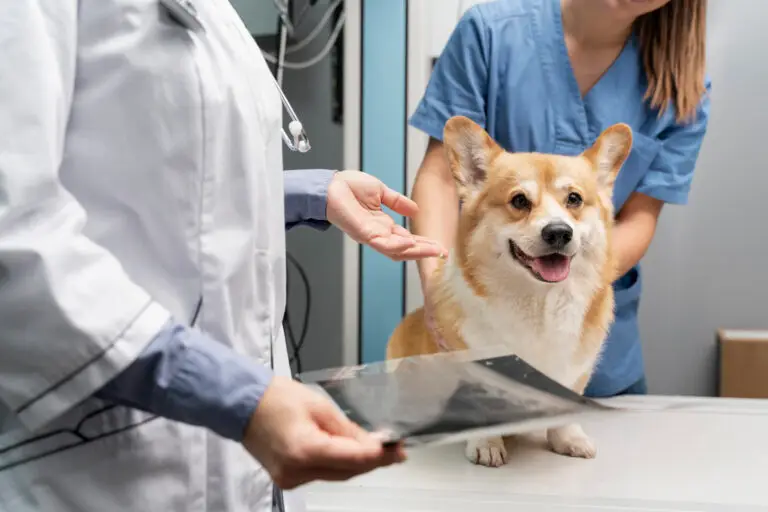Making Surgical Equipment Affordable with Leasing and EMI
Table of Contents
Introduction
Many small clinics and healthcare MSMEs want to buy modern surgical tools, but the high upfront cost stops them.
That’s where leasing and EMI options help. By offering monthly payments, sellers make it easier for buyers to invest in good surgical equipment.
In this article, we’ll explain how to offer EMI or leasing, whether you do it through banks or directly as a vendor.
The goal is simple: make buying easier and grow your sales.
Let’s explore the two main ways you can offer this facility.
1. What is the difference between EMI and leasing when selling surgical equipment to clinics?
When selling surgical equipment to small clinics or healthcare MSMEs, you can offer two main payment options: EMI (Equated Monthly Installment) or leasing.
While both help the clinic avoid paying a large amount upfront, they work very differently.
EMI – Buyer Owns the Equipment
With EMI, the clinic buys the equipment.
You or a financing partner provides the option to pay in small monthly parts, instead of a full one-time payment.
After completing all the EMIs, the clinic becomes the full owner of the equipment.
Key Features of EMI:
- The clinic owns the surgical tool after paying all EMIs.
- Fixed monthly payments with or without interest.
- Suitable for clinics that want long-term control over the asset.
- Often used when buyers want to build long-term infrastructure.
Example:
A small ENT clinic wants to buy an electrosurgical unit worth ₹1.5 lakh. They pay ₹15,000 per month for 10 months. After 10 months, it’s fully theirs.
Leasing – Clinic Rents the Equipment
In a leasing model, the clinic rents the surgery equipment for a fixed time.
They pay monthly charges during the lease.
But the ownership stays with the supplier or leasing company.
At the end of the lease, the clinic can return it, renew the lease, or sometimes buy it at a lower price.
Key Features of Leasing:
- Clinic pays to use the equipment, not own it.
- Lower upfront costs.
- Ideal for equipment that changes quickly or becomes outdated.
- Reduces responsibility for resale or repairs.
Example:
A GP clinic needs a surgical light for minor procedures.
They lease it for 12 months at ₹2,000/month. After a year, they return it and lease a newer model.
Which One to Choose as a Supplier?
- Choose EMI if your customers are financially stable and want long-term control.
- Offer leasing if your buyers are looking for low-cost entry or short-term usage.
- You can also combine both: Start with a lease and give a buyout option at the end.
In short, EMI gives ownership and builds clinic assets.
Leasing is flexible, low-risk, and works well for fast-changing medical tools.
Offering both options helps you serve more buyers and grow faster.
2. How can small equipment sellers partner with NBFCs or fintechs to offer EMI options to buyers?
If you’re a small seller of surgical tools or surgery equipment, offering EMI can help you close more sales, especially in healthcare MSME markets.
But handling EMI plans on your own can be risky and complex.
That’s where partnerships with NBFCs (Non-Banking Financial Companies) or fintech platforms come in.
Step 1: Understand What These Partners Offer
NBFCs and fintechs provide the credit facility to your buyers.
You don’t have to take any financial risk.
They give the buyer a loan, and you get your full payment upfront from the lender.
The buyer then pays the lender in monthly EMIs.
Step 2: Choose the Right Type of Partner
You can explore two types of partnerships:
- NBFCs with Equipment Finance Products
Look for NBFCs that already offer medical or equipment loans. These include companies like Tata Capital, Shriram Finance, or SMC.
- Embedded Fintech Platforms
These are digital lenders who integrate their EMI services right into your sales process. Examples include Oxyzo, Lendingkart, and Rupifi.
Step 3: Set Up Embedded Financing at Checkout
If you sell online (via website or WhatsApp catalog), you can embed EMI options into your checkout flow.
Buyers choose EMI at the time of order.
Fintech APIs handle the credit approval instantly.
What you need:
- KYC of your business
- Product catalog with pricing
- Integration of the lender’s EMI plugin or link
This is called “Buy Now, Pay Later” for surgical tools.
Step 4: Offer Pre-Approved Loan Support Offline Too
If you sell through field reps or distributors, NBFCs can give pre-approved loan slabs for trusted clinics.
Your rep helps with basic documents, and the NBFC handles the rest.
This helps close deals faster without delay in loan paperwork.
Step 5: Share Buyer Info (With Consent)
Once the buyer agrees to EMI, you share basic details like:
- Clinic name and address
- Equipment quote or invoice
- Udyam/GST and ID proof
The NBFC or fintech verifies, sanctions the EMI, and disburses money to you.
Why It Works for You:
- You get full payment up front
- Buyer pays over 6 to 24 months
- No recovery headache for you
- Boosts trust and conversions
In summary, small sellers can grow fast by teaming up with fintechs or NBFCs.
You help your buyers afford good equipment without stress, and you get paid without delay. It’s a win-win model for building a long-term business.
3. What documents and risk checks are needed to lease surgical tools to Tier 2/3 clinics?
If you’re planning to lease surgical tools or surgery equipment to Tier 2 and Tier 3 clinics, it’s important to follow a clear process.
This includes checking documents, verifying the buyer’s reliability, and protecting your business with basic safeguards.
Let’s break it down in simple steps:

Step 1: Collect Basic Business Documents from the Clinic
Before leasing any equipment, collect these key documents from the clinic:
- Udyam Registration (if registered as a micro or small enterprise)
- GST Certificate
- Clinic Owner’s PAN and Aadhaar
- Medical Council Registration (for doctors running the clinic)
- Rent Agreement or Property Proof (to verify clinic location)
- Bank Statement (last 6 months) (to check financial health)
These help you confirm that the clinic is real and operating legally.
Step 2: Do a Simple Credit Evaluation
You don’t need to do a complex credit check, but a basic review helps reduce risk:
- Look at the clinic’s monthly revenue from OPD or minor procedures
- Check for existing EMI obligations or loans
- Ask if the clinic has leased or borrowed equipment in the past
- You can even run a CIBIL check or use a fintech partner to help with credit profiling
This will help you decide the right EMI amount or lease tenure that the clinic can handle.
Step 3: Set Up a Clear Lease Agreement
A signed lease agreement protects both you and the clinic. It should include:
- Equipment details with serial numbers
- Lease period (e.g., 12 or 24 months)
- Monthly payment amount and due date
- Penalties for late payments
- Conditions for equipment maintenance
- Buyback or ownership clause (if lease-to-own)
This gives legal clarity and avoids confusion later.
Step 4: Ensure Operational Safeguards
Here are some practical steps to protect your equipment:
- Asset Tagging: Stick barcodes or RFID tags on high-value tools
- Insurance (Optional): Cover against theft, fire, or damage
- Onsite Inspection: Do a site visit before installation if possible
- GPS Trackers (for mobile devices): If the tool is portable or high-risk, consider basic tracking
These steps build confidence that your leased equipment is in safe hands.
Step 5: Use Simple Digital Tracking Tools
You can maintain a basic Excel tracker or use a free CRM (like Zoho or Google Sheets) to monitor:
- Lease start and end dates
- Payment status
- Service or maintenance schedules
This ensures you’re always on top of your leased inventory.
In Short:
Leasing surgical tools to Tier 2/3 clinics is a smart way to support growth while earning steady income.
But don’t skip basic risk checks.
With the right paperwork, simple due diligence, and a clear agreement, you can lease confidently and scale your business with peace of mind.
4. Which type of surgical tools are best suited for leasing or EMI in low-income healthcare markets?
In many low-income healthcare markets, especially in Tier 2 and Tier 3 cities, clinics and nursing homes often face cash flow problems.
They cannot afford to buy high-cost surgical tools in one go.
That’s where leasing or EMI options become useful, especially for tools that are expensive, critical, and used frequently.
Let’s look at the types of surgery equipment best suited for this model.
1. Electrosurgical Units (ESUs)
These are essential for small surgeries, especially in ENT, dermatology, and general practice clinics.
- Why it fits leasing: High upfront cost (₹40,000–₹1,50,000), but regular usage.
- Why clinics prefer EMI: Helps them start minor OT services without investing heavily on Day 1.
- Add-on Tip: You can bundle it with return cables, electrodes, and patient plates.
2. Patient Monitoring Systems
These include tools like ECG monitors, pulse oximeters with displays, and multi-parameter monitors used during surgeries or post-op care.
- Why it’s ideal for EMI: They cost anywhere between ₹25,000–₹1,00,000, depending on the features.
- Why clinics want this: Clinics running minor OTs or day care surgeries need basic patient safety tools.
3. Minor Operation Theatre Kits
These are full kits including:
- Surgical lights
- Adjustable OT tables
- Suction machines
- Sterilizers
- Surgical tool trays
- Why leasing works: These cost upwards of ₹2 lakh. Leasing lowers the barrier for a small clinic to start OT operations.
- Long-term gain: It helps the seller lock in long-term business while the buyer builds their setup step-by-step.
4. Dental Chairs or ENT Procedure Units
These are specialty equipment used daily in clinics.
- Typical cost: ₹50,000 to ₹2.5 lakh
- Why EMI helps: Many standalone clinics want to upgrade their setup, but don’t have large savings.
- Added advantage: Leasing models can offer free servicing as part of the package.
5. Ultrasonic Cleaners or Tabletop Sterilizers
They’re needed regularly in any surgery-supporting setup.
- Ideal for leasing in low-income zones: Even though these are not the most expensive, clinics prefer to save upfront capital for medicines or salaries.
- Cost range: ₹10,000–₹50,000
Key Takeaway
Leasing or EMI is best suited for capital-intensive surgical tools that small clinics need every day, but can’t afford upfront.
Tools like electrosurgical units, patient monitors, minor OT kits, and dental/ENT setups are perfect candidates.
Sellers can win more buyers by offering payment flexibility and bundled support.
It helps Healthcare MSMEs grow faster without feeling the financial burden.
Conclusion
Offering leasing or EMI options for surgical tools is a smart way to boost sales, especially in Tier 2/3 markets.
For many healthcare MSMEs, buying expensive surgery equipment upfront is difficult.
By partnering with NBFCs or fintech platforms, sellers can provide flexible payment models that match the buyer’s affordability.
You can choose between two models:
- EMI via financing partners, where the clinic owns the tool after payments.
- Leasing, where the clinic pays monthly but doesn’t own the tool until the end.
Sellers must also ensure proper documentation, basic credit evaluation, and local support.
Capital-heavy tools like patient monitors, OT kits, and electrosurgical units are ideal for such models.
In short, this approach removes financial barriers and helps clinics upgrade faster while suppliers close more deals.
FAQs
- What is the main difference between EMI and leasing for surgery equipment?
EMI leads to ownership after full payment. Leasing means the equipment is rented with an option to buy later.
- Can small surgical tool suppliers offer EMI directly to buyers?
Yes, through vendor financing or by partnering with NBFCs or embedded lending fintechs.
- What documents are required to lease surgical tools to a clinic?
Basic KYC, GST, Udyam, bank statements, credit check, and lease agreement forms are needed.
- Which surgical tools are ideal for EMI or lease models?
Capital-heavy tools like OT kits, patient monitors, electrosurgical units, and dental chairs.
- Are there any tax benefits for clinics using equipment financing?
Yes. Clinics can claim depreciation and interest deductions under certain tax rules for leased or financed equipment.
Also Read,
- The Ultimate Guide: Working Capital Loans for Small Business (MSMEs) in 2025
Understanding the Impact of Payment Terms on Working Capital for Clinics
How Poor Inventory Management Hurts Working Capital in Pharmacies.
Want a Better Business Credit Score? Small Pharmacies Can Now Use UPI & Cards to Build It
Want a Better Credit Score? Use Small Daily Payments to Build Your CBIL (For Clinics & Pharmacies)
Case Study:How a Small Clinic Improved Its Working Capital Management





